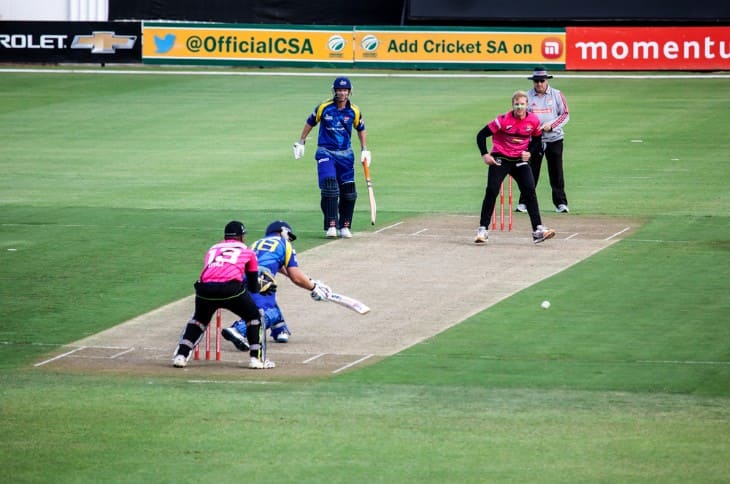Evolution of the Cutter: From Classic to Modern Bowling Tactics
In the world of bowlers, techniques are various and all of them require polishing to be effective. The cutter is no exception. Moreover, this old technique has always been one of the most important pieces of weaponry for every bowler. For that reason, we dedicate this article to this important technique. What is a cutter in cricket? What are the most important aspects of its evolution? These are some of the answers we are focusing on because this technique has so many nuances. Its unpredictability made it a strategic weapon of many and each player polished it in his own way, which made it relevant through all these years – from early days to modern fast bowling.
What is a Cutter in Cricket?
First of all, let’s try to define a cutter in simple words. Basically, this is a technique that refers to a deceptive delivery, which can come either from a fast or medium-paced bowler. Like always, it’s a variation on a theme, here the bowler applies a little bit of his spices to create a slight amount of spin. In that way, the ball’s trajectory deviates upon pitching. Logically, the goal is to deceive the batsman, with the unpredictability of the ball’s movement, which creates a unique challenge for them.
As mentioned, this technique is all about variations and nuances, so there is no exact way to describe it. Essentially, the bowler has to apply some variations when it comes to grip and seam position during the release. It’s all about small alterations, about small changes that could make deviation either away or into the batsman. The goal, of course, is always the same – to make it hard for the batsman to anticipate the ball’s movement.
As a technique, a cutter works in all formats of cricket but it turned out to be the most effective in formats like One Day Internationals and Twenty20 cricket. Once again, the beauty of this technique is in its evolution, where besides traditional forms, bowlers also apply their unit moves to create variations and use it as a strategic weapon.
Evolution of Cutter in Cricket
It’s hard to say when the cutter was introduced for the first time as a part of bowling tactics, but we know it was long ago. Meanwhile, we saw significant changes over the years. The essence remained the same, with the bowler imparting just a slight amount of spin, causing small deviations on otherwise normal trajectories. These small deviations have always been the thing about the cutter, that surprising factor that drives batsmen crazy. But first, let’s pay attention to the classic approach to this technique.
Classic Cutters
As mentioned, it’s hard to say when bowlers started to implement cutters into their games but from today’s perspective, it seems like this technique has been around since the early days. These have always been one of the most special and most lethal weapons of bowlers, because of their subtle variants that deceive batsmen. And when it comes to the traditional approach to this technique, just a slight movement of the finger seems enough to put some spin to the ball and cause deviation. The grip and seam position were paramount in delivering effective cutters, and bowlers developed a keen sense of control to execute this variation with precision.
Pioneering figures like Richard Hadlee and Imran Khan exemplified the art of classic cutters, mastering the nuances of seam and swing bowling. We usually see these guys as players who paved the road for later generations. They were the first to emphasise the importance of the thing we call grip manipulation today. Back in the day, this technique was used as a means to introduce a variety of bowlers' arsenal, something that would keep batsmen wondering what was coming next in the later stages of the game.
- Grip and Seam Position: Bowlers focused on the intricacies of grip and seam positioning to impart the desired spin on the ball.
- Subtle Finger Movement: Execution of classic cutters relied on minimal but precise finger movement during the release.
- Control and Precision: Bowlers needed exceptional control and precision to consistently deliver classic cutters with accuracy.
- Deceptive Nature: The classic cutter was employed to deceive batsmen by deviating from the anticipated trajectory upon pitching.

Pioneer Bowlers
Of course, cutters wouldn’t become what they are today without true pioneers and as mentioned, some of the names that come to mind first are guys like Richard Hadlee and Imran Khan. Those guys paved the road with their world-class skills and exceptional control over deliveries. Hadlee has always been famous for his accuracy, so the implementation of a cutter came naturally, with so many nuances with the implementation of this technique in his arsenal. Khan, on the other hand, was an all-round player, but still managed to apply this technique in such a nice way that it became one of the trendsetters for the future generations.
With bowlers like these two, people became aware of the power of this technique. It became obvious that this wasn’t just a variation. Future bowlers made it a strategic weapon. Their ability to consistently deliver accurate cutters paved the way for the evolution of this craft, influencing subsequent generations of fast bowlers who sought to emulate their success. The legacy of pioneer bowlers is evident in the continued significance of the cutter in modern cricket, especially in limited-overs formats where variations play a crucial role.
Richard Hadlee (New Zealand):
- Mastered the classic cutter with exceptional control and accuracy.
- Utilised subtle grip and seam variations to deceive batsmen.
Imran Khan (Pakistan):
- Employed strategic use of the cutter as part of his versatile bowling repertoire.
- Set the standard for all-rounders, showcasing the cutter's effectiveness in both restricting runs and taking wickets.
Transition to Limited-Overs Cricket
Then, the transition to limited overs happened. It started in the last decade of the 20th century and ended somewhere in the early 2000s. Fast bowlers finally realised the full potential of this technique and its appliance in shorter formats. Suddenly, the technique gained extreme popularity in One Day Internationals and Twenty20, where it became an important weapon in the limited-over context. It was a perfect technique for disrupting the batsman’s rhythm.
While the transition was ongoing, bowlers experimented a lot with cutters at a quicker pace, which all made it way more challenging for batsmen to adjust and time their shots. With the increased pace, as well as the ability to move off the pitch unpredictably, bowlers finally got the opportunity to apply it against aggressive batting during power plays and death overs. This was a real revolution, a big strategic level-up for bowlers.
- Emphasis on Diverse Skills: Bowlers recognized the need for diverse skills in limited-overs cricket to effectively contain and dismiss batsmen.
- Quicker Pace: Bowlers started delivering cutters at a faster pace, adding an element of surprise and making it difficult for batsmen to anticipate the movement.
- Power Plays and Death Overs: The cutter gained prominence in power plays and death overs, becoming a key tool for bowlers to control the flow of runs and pick up crucial wickets.
Modern Cutters
As the game of cricket was evolving, the cutter was gaining its modern variation, with way more sophistication. Bowlers made it to perfection, but the essence remained the same. It remains a super-versatile weapon so it doesn’t surprise that there are so many advanced specialised training methods for this technique. In modern-day cricket, bowlers experiment not just with traditional things like grip and finger – they also introduce all kinds of minor variations, adding their personal touch to the execution.
In other words, creativity has become more important than ever. With demands in formats like T20 becoming higher and higher, bowlers are forced to be creative and constantly work on new variations. Knuckleball and the back-of-the-hand cutters are some of them.
- Specialised Training: Bowlers undergo specific training to master the cutter, focusing on grip variations, finger movement, and execution.
- Innovation and Creativity: Modern bowlers introduce new variations like the knuckleball and back-of-the-hand cutter to add unpredictability to their deliveries.
- Video Analysis: Advanced video analysis is employed to study the nuances of cutter execution, helping bowlers refine their techniques for optimal performance.
- Data Analytics: Bowlers leverage data analytics to understand opposition batsmen's tendencies, aiding in the strategic deployment of cutters during matches.

Technology and Analysis
Technology and analysis have become integral components in the evolution of cutter tactics in modern cricket. We live in the technological era, so bowlers and coaches rely a lot on all kinds of technological tools to improve their techniques and understand those small nuances in execution that make a difference. With such a detailed approach, it’s much easier to address key aspects, such as grip, release points, seam position variations and other things that contribute to the overall success of the distribution.
Let’s not forget data analytics either, which is also available to cricketers these days and gives bowlers insights to assess the strengths and weaknesses of the opposing batsmen. In other words, bowlers can now adapt their delivery according to the opponent. The cutter became a matter of craftsmanship, a tactical weapon that gave them the opportunity to take control of the game.
Video Analysis:
- Bowlers analyse video footage to scrutinise their own cutter executions and study opponents' techniques.
- Detailed examination of grip, release points, and seam positions contributes to refining the cutter technique.
Data Analytics:
- Statistical insights are used to assess the tendencies and preferences of opposing batsmen.
- Enables strategic decision-making regarding when and how to use the cutter based on the analysis of batsmen's weaknesses.
Technological Tools:
- High-speed cameras and slow-motion replays aid in capturing and analysing the intricacies of cutter deliveries.
- 3D motion analysis systems provide a comprehensive view of a bowler's body movements during the release of the cutter.
Training Simulators:
- Virtual reality and simulation technologies offer bowlers a platform to practise and refine their cutter skills in a controlled environment.
Innovation and Creativity
The cricket players made their techniques to perfection, the only way to stand out is to be innovative and creative. From the bowler’s perspective, this means seeking new ways to outsmart batsmen. Consequently, this leads to variations of techniques like cutter. The bowlers’ arsenal is becoming bigger and bigger.
We already mentioned the knuckleball, one of the new iterations. With this one, bowlers use a knuckle grip to release the ball, free of any conventional spin, which makes its trajectory particularly unpredictable, and super challenging for batsmen to react properly. Then, there is the back-of-the-hand cutter, with its unique wrist position that has become particularly popular lately.
And when it comes to innovations, it’s hard without technology. Technology is the thing that gives bowlers room for new experiments and further refining of new variations. Video analysis comes to mind first, but there are also coaches who need to encourage players to experiment more. Only such a combination con moves the cutter away from more traditional forms and makes it effective in these modern times.
Knuckleball:
- Involves a knuckle grip during release, producing a delivery without conventional spin.
- Adds unpredictability, making it challenging for batsmen to read the trajectory accurately.
Back-of-the-Hand Cutter:
- Utilises a unique wrist position during release to generate movement away from the batsman.
- Enhances the variety of cutter deliveries, adding another layer of complexity for batsmen to contend with.
Technological Experimentation:
- Advanced video analysis provides a platform for bowlers to experiment with and refine new cutter variations.
- Collaboration with coaching staff encourages a culture of innovation, empowering bowlers to push the boundaries of traditional techniques.
Dynamic Culture:
- A culture that values creativity fosters an environment where bowlers feel motivated to continuously innovate within their skill set.
- Encourages a mindset of adaptability and experimentation to stay ahead in the ever-evolving landscape of cricket.
Summary
All in all, the cutter evolution is quite an interesting thing. When you look at how things looked in the early days and how they look today, it’s obvious that the technique changed a lot. It evolved from a subtle variation into a strategic tool that can be a game-changer in so many scenarios. And, with the future advance of the technology, bowlers continue to perfect it and figure out new alterations. With all that in mind, it’s obvious that the cutter has passed the test of time and that it remains a formidable weapon that continues to reshape the game of cricket over and over.


